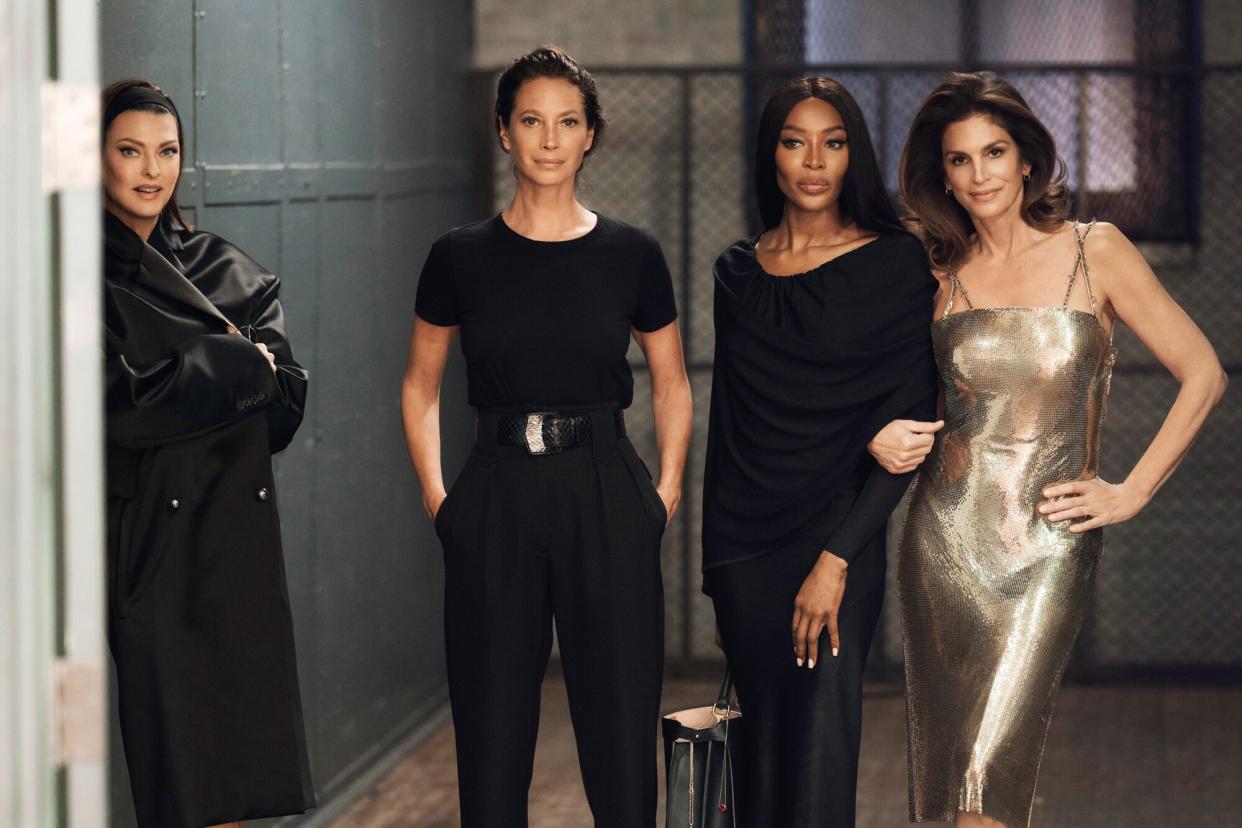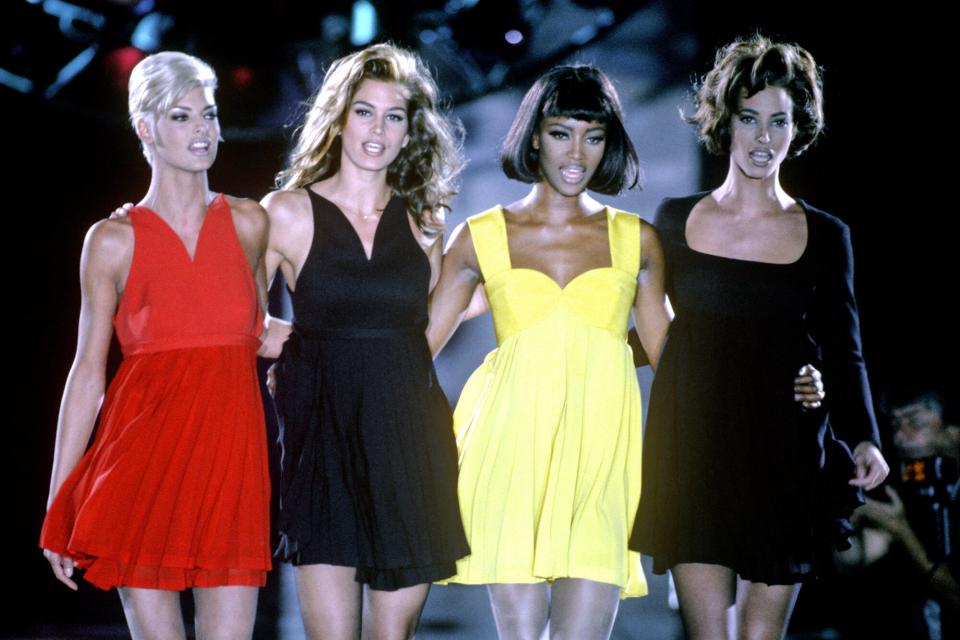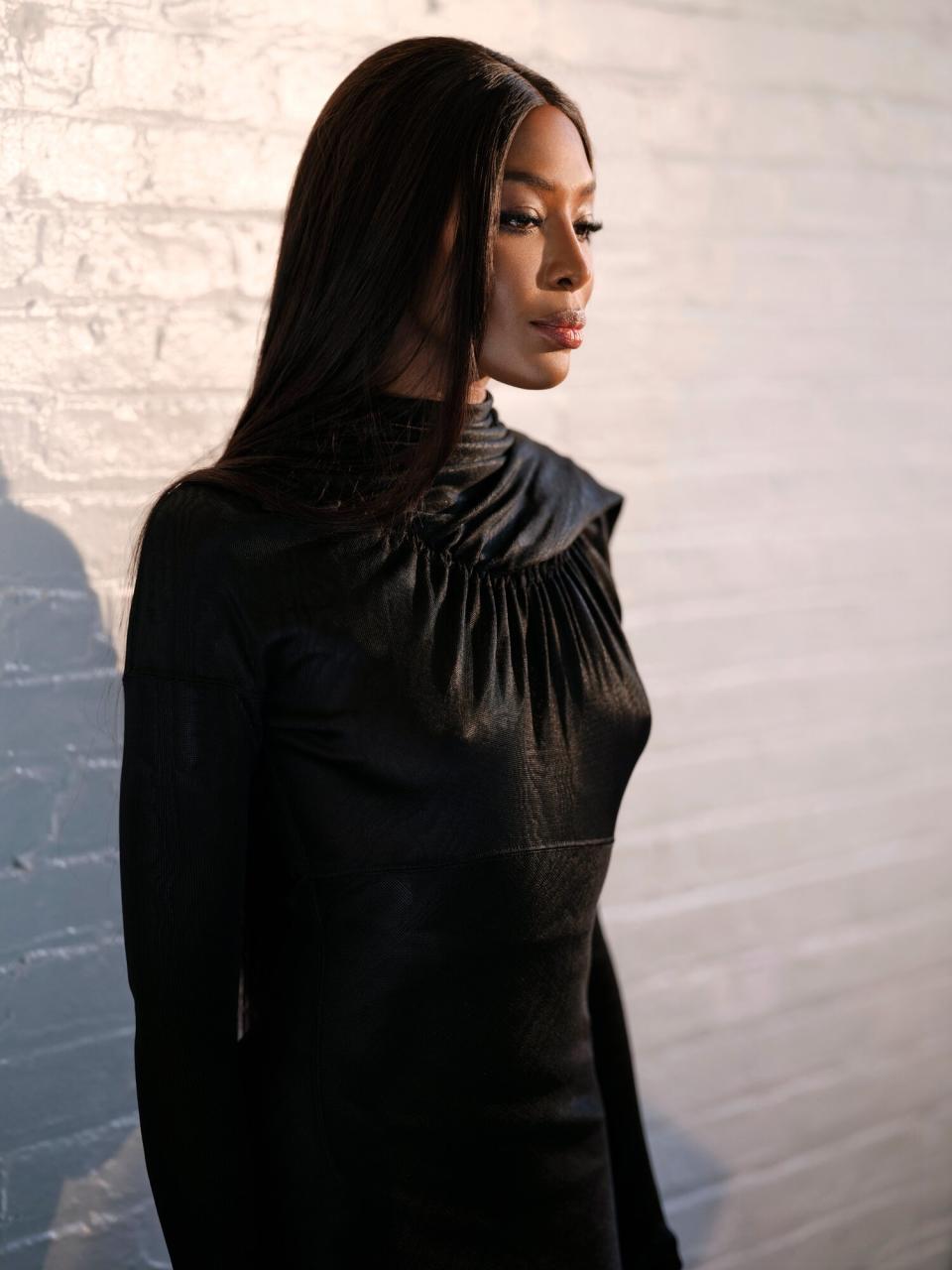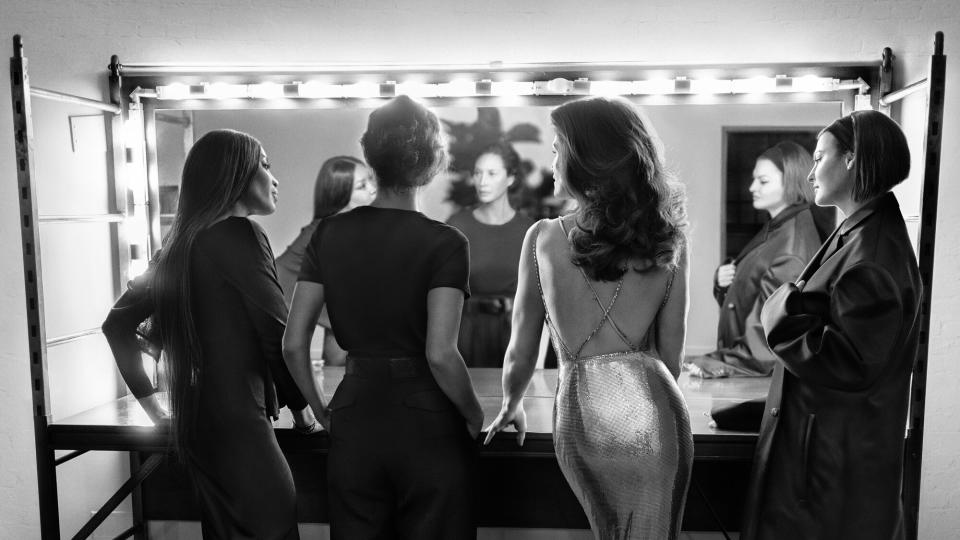You better work! Apple TV's “The Super Models” documents the birth of a cultural phenomenon

- Oops!Something went wrong.Please try again later.
- Oops!Something went wrong.Please try again later.
- Oops!Something went wrong.Please try again later.
- Oops!Something went wrong.Please try again later.
Linda. Christy. Naomi. Cindy.
Standing on their own, those names may or may not mean something to you, but in a group, they are the Big Four — faces that defined a generation and embodied a cultural phenomenon. The Super Model.
The Super Models — a new four-part docuseries chronicling the rise, dominance, decline, and impact of these four women on fashion and popular culture, directed by Larissa Bills and Oscar-winner Roger Ross Williams — premieres today on Apple TV+.

Apple TV+ Linda Evangelista, Christy Turlington, Naomi Campbell, Cindy Crawford
One can point to the exact moment of the birth of the "super model": Oct. 30, 1990. George Michael's "Freedom '90" video. Often imitated, never duplicated. Directed by David Fincher before he embarked on a successful film career, the clip famously featured Linda Evangelista, Christy Turlington, Cindy Crawford, and Naomi Campbell lip-synching for their lives to Michael's anthemic pop masterpiece.
That video catapulted its stars to a completely different level of fame. They had already conquered the fashion world, covering Vogues and closing runway shows the world over. Models had broken through into the cultural zeitgeist before, transitioning into acting or music, as Twiggy had done in the '60s or Jessica Lange in the '70s. But the supers were something else completely.
"I think [Williams and I] were both in New York at that time and I was an NYU student, and I remember those women were just everywhere," Bills tells EW. "It was just this amazing time with fashion. I was a poor student, but I aspired from afar."
"I was covering fashion," Williams says. "I was doing a fashion series with Veronica Webb, and going to shows. It was electric. The women, being backstage at those shows, I mean, I was totally seduced."
The Big Four were splattered across billboards in Times Square and throughout magazines hawking beauty and fashion brands; they were selling Pepsi during the Super Bowl and dancing with Michael Jackson. Crawford in particular was branching out into movies and television with MTV's House of Style. The supers existed at the nexus of early '90s popular culture. They were household names and their own brands. In Williams' words, they were the "original influencers."

Paul Massey/Shutterstock Linda Evangelista, Cindy Crawfrod, Naomi Campbell, and Christy Turlington at Versace Fall/Winter runway show, Dec. 1991
"We did a panel with Ashley Graham, and she's like, that doesn't happen where you get to go for three weeks off to Morocco and do a glamorous fashion shoot and tell a story," Williams says. "Now it's all fast, and it's all on Instagram. But these are the originators. This was before, this started at all. This was when it all came together. Fashion and Hollywood and the music world and MTV. It all came together to create the beginning."
After the emergence of MTV and cable, but before the dawn of the internet and Instagram, the supers came of age at a time when fame was becoming supersized. Pop stars, movie stars, and athletes became gods of religions unto themselves. Into this cult of personality strutted four young women who were unprepared for the intense scrutiny that came with their supersized fame, but determined to make the most of it.
"We looked powerful and then we started believing that," Crawford says in the docuseries.
The Big Four are all executive producers on The Super Models, which underscores one of the reasons they were able to succeed on such an unprecedented scale: they worked together. They each had their own lanes in which they excelled, like some elite fashion force here to slay the day: all-American Cindy was the commercial girl, Linda was the haute couture muse, Christy was the brand ambassador, and Naomi was, of course, the catwalk queen.
But that wasn't always the case. Campbell recounts how, as a Black model in a majority white industry, she struggled getting booked for runway shows early in her career but Turlington and Evangelista, who were high in demand, refused to do shows unless Campbell was also cast.
And when Naomi Campbell became the Naomi Campbell of Beyoncé's "Get Me Bodied," a runway assassin with the most killer walk in the game, she still couldn't book ad campaigns the way her three counterparts could.
"As a Black man in the entertainment industry, I know [Campbell's] struggles all too personally," Williams says. "I've had to fight those battles. I have to work harder and fight harder. Doors were not open for me and I could even win an Oscar and no one calls me."
Williams became the first Black director to win an Academy Award when he took home Best Documentary Short Subject for 2010's Music for Prudence.
"I understand how personally, deeply, when you are asked to do the runway in Naomi's case, but not asked to do the campaign, and the humiliation of that, and refusing to let that stop you," Williams continues. "That could stop you in your tracks. That could have stopped me in my career. It could have stopped anyone. It stops many. But Naomi chose to not let her herself be stopped because of the color of her skin. She says that in the film."

Apple TV+ Naomi Campbell
"Naomi is tough," he adds. "Naomi is Naomi because she's such a strong, powerful, strong-willed Black woman who will not be stopped. Who will not be silenced in any way. That's why we love Naomi. I totally identify with that as a Black man. No one's going to stop me either. I'm inspired by Naomi."
The reign of the supermodels was short, the end signaled by the emergence of the waifish Kate Moss in 1992, and the backlash began in full with Evangelista's now-infamous quote about not getting out of bed for less than $10,000 a day. The super models were getting out of control, claimed those who had previously benefited from their power — and contributed to it — but had grown to chafe in resentment.
Campbell was labeled difficult by a vengeful agent for daring to refuse a campaign contract that paid her a fraction of what she knew her friends were making — because they talked about their compensation and knew their worth. That they were women, particularly women who made their living off something as ephemeral as their beauty, exerting that kind of autonomy rubbed a lot of people the wrong way. They were replaced by next year's models and the wheels of fashion continued to turn.
And yet, the Big Four remain Big. They are iconic in a way that is not tired and overused and meaningless. "You're perfect, you're beautiful, you look like Linda Evangelista," RuPaul's Drag Race ninth-place finisher Aja lamented to seventh-place finisher Valentina, who did, in fact, look like Linda Evangelista. "Naomi Campbell WALK! Naomi Campbell WALK! Walk across the room like Naomi Campbell!" Queen Bey commanded. And her word is law.
The supers were also instrumental in making, as Bills notes, "some of the best photography of the past 30 years."
These women changed fashion — and culture — by virtue of being, yes, in the right place at the right time, but how many other models came and went without so much as an honorable mention? The supers stood out, and they remain iconic, because of their beauty, their personas, their ambition, and their friendship.
"I don't want to say they legitimized the [modeling] profession, but they brought power to being a beautiful woman in that way," Bills says. "And being able to transcend fashion, transcend beauty, and bring an element of feminism to modeling, to the fashion industry, to the point where beauty and power are not exclusive. You can have both."

Apple TV+ Naomi Campbell, Christy Turlington, Cindy Crawford, and Linda Evangelista
"I think we're in a moment where we're recognizing there's more than one way to be a feminist, right?" she adds. "There's so many ways. And there's so many ways to age and be a woman. And these women have sort of embodied that for me."
All four parts of The Super Models are now streaming on Apple TV+.
Sign up for Entertainment Weekly's free daily newsletter to get breaking TV news, exclusive first looks, recaps, reviews, interviews with your favorite stars, and more.
Related content:

